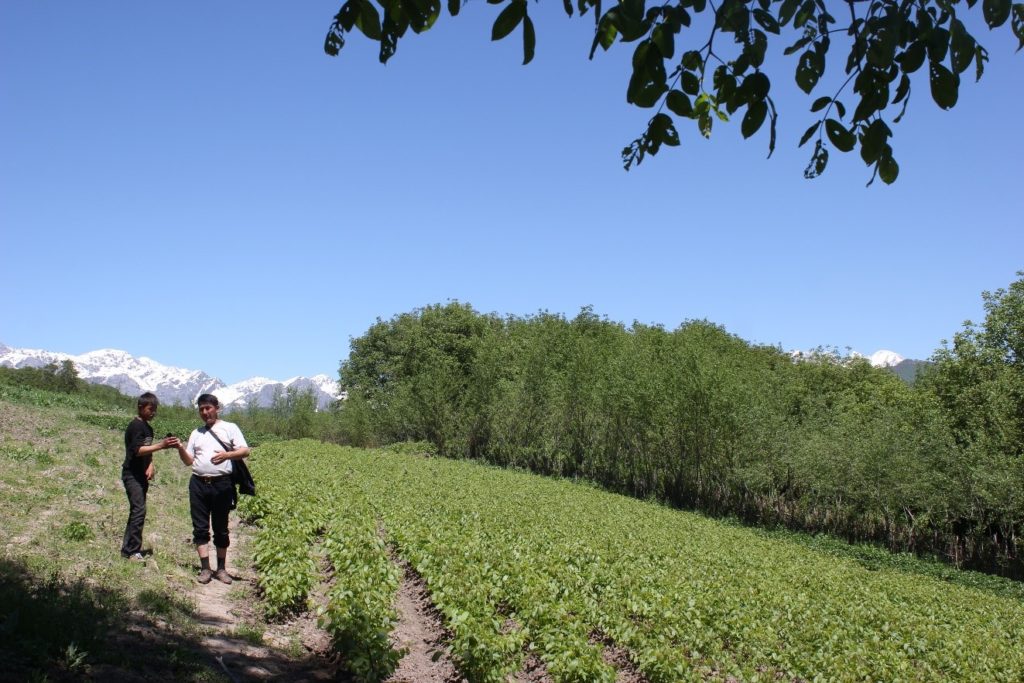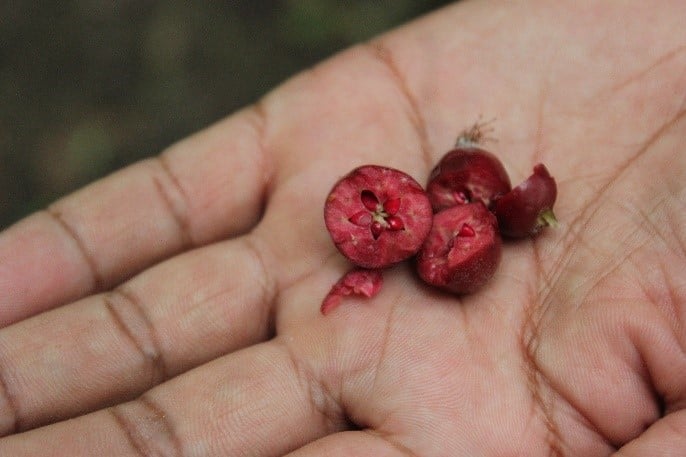The rural climbs of Kyrgyzstan are legendary. They are also under threat. Brett Wilson has been working as part of an international effort to secure the future of Central Asia’s unique native flora.

Central Asia was once the focus of trade across the world. The Silk Road ran from China across into Europe spanning the mountains and valleys of Asia’s central region. However, as this region became absorbed into the USSR, its links to the Western world were broken and the transfer of knowledge regarding this region’s biodiversity was, unfortunately, limited due to rising tensions between countries. Today, after the breakup of the Soviet Union and the independence of countries such as Kyrgyzstan and Kazakhstan, the scientific and environmental departments of these countries are growing and the amazing species diversity that these areas hold is becoming apparent.
I worked in the Republic of Kyrgyzstan in one of the biodiversity hotspots of the world, the walnut-fruit forest. These forests are thought to be the origin of an incredible variety of fruits and nuts such as apples, pears, apricots, walnuts, and pistachio nuts as well as a range of flowers including tulips. Due to the history of these countries, little research has been carried out in these forests especially with regard to some of the more Endangered species. The landscapes where these species are found are heavily utilised by the local human population. The resources gathered from these forests have helped support local communities for thousands of years and continue to be an exceptionally important part of local culture and life.

The forest ecosystem, however, is under pressure due to overharvesting of resources and excessive livestock grazing within the forest landscape. This is greatly limiting the regeneration capacity of the forest and may mean that these areas are not sustained for future generations. As the local populations continue to increase, this problem also escalates. The remaining habitat fragments are becoming more damaged and populations of many fruits and nuts are declining dramatically. Numerous species located in these forests have been identified as threatened and in need of urgent conservation action. However, limited information on these forest systems and the species within greatly inhibits the targeting and therefore the effectiveness of any action planned.
I studied the apple species Malus niedzwetzkyana, already on the Endangered list, with the hope of reducing the knowledge gaps surrounding threats to this species and its ecology. The apple is unique as it has a red pigment which permeates through its leaves, flowers and fruit leaving red-tinged leaves, a deep red fruit from its skin through to its flesh, and pink flowers. This red pigment is a type of anthocyanin which has been shown to have beneficial health properties, with anti-inflammatory and anti-viral being two of the most significant. Its unique genetic makeup highlights it as a critical species to protect as it has important potential use in developing new apple varieties.

Working with Fauna and Flora International and Imperial College London, I collected data in four forest fragments that were known to be strongholds of the walnut-fruit forest ecosystem and where local communities were willing to provide support to conservation practices. During my trip, I located around 150 individuals [the largest dataset known globally] and recorded the extent of threats from livestock grazing and firewood collection across these areas. I also explored the basic ecology of the species and developed a species distribution model to investigate historical forest cover and try to develop evidence for past habitat loss.
By gathering this information, I have been able to contribute to the protection of an iconic Central Asian landscape and change the fate of one of its more unique species.
My research highlighted that all forest fragments were greatly affected by humans. However, in the sites of Sary-Chelek Biosphere Reserve and Kara-Alma Forestry Unit, there was potential to strengthen exceptionally stressed populations through sapling planting projects. I identified south-west slopes with relatively open canopy as good areas to plant saplings. Using the species distribution model, I provided evidence that the historical range of this species was much larger than its current range, highlighting the effect of habitat loss. This affects not only Malus niedzwetzkyana but the whole community found in the walnut-fruit forests.
By gathering this information, I have been able to contribute to the protection of an iconic Central Asian landscape and change the fate of one of its more unique species. This work is critical in designing the conservation actions that will protect this species in the future and the community in which it grows. To have been able to explore a scarcely known corner of the world, walking through the forests where few have been before, was a truly remarkable experience. The contrast of Russian and Turkish influences alongside the unique traditions of the region make this a veritable cultural melting pot. This region, hidden from the world I grew up in, is full of incredible people, exciting nature, and wonderful opportunities, a land which I hope the rest of the world will come to appreciate as I have done.
Brett Wilson carried out his research with the support of Fauna and Flora International, The Royal Botanic Gardens, Kew, and Imperial College London, with funding from the Global Trees Campaign. His interests lie in tree conservation research and he is currently an intern at Botanic Gardens Conservation International where he works on protecting tree species worldwide.
All photography by the author.
